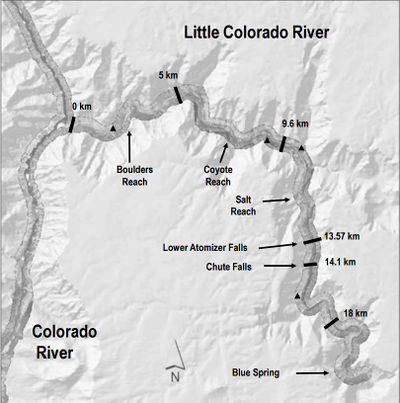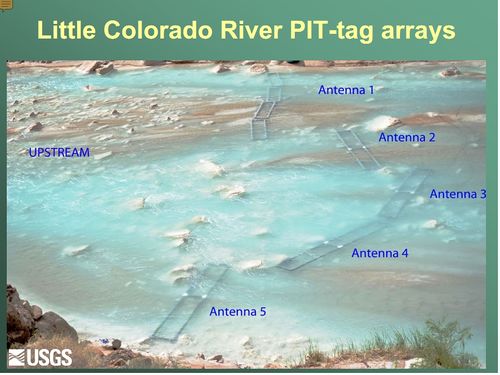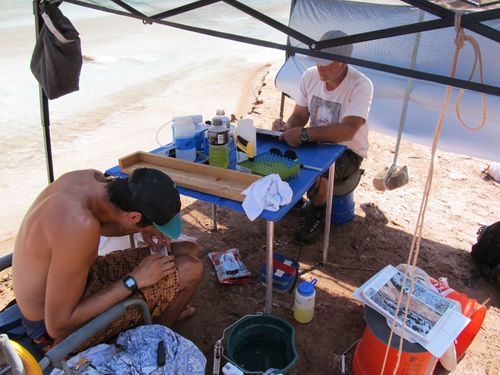 Coyote Reach, Little Colorado River. Watercolor by David R. Van Haverbeke |
Humpback chub monitoring in the Little Colorado River
Since 2000, monitoring using hoop nets has been conducted in the lower 13.57 river kilometers (rkm) of the Little Colorado River (LCR) to estimate abundance and track trends in abundance of the endangered Humpback Chub (Gila cypha), and to monitor other fishes. These monitoring activities occurred during the spring and fall seasons. Native fish species continue to dominate the LCR, comprising 92 percent of fish captures since 2000. We used closed Chapman Petersen mark-recapture methods and catch per unit effort data to estimate either absolute or relative abundances of Humpback Chub of various size classes. Between 2000 and 2006, adult Humpback Chub (≥200 mm) maintained stable but low abundances of <3,000 individuals during the spring and fall seasons. From 2007 to 2014, the spring abundance of adult Humpback Chub significantly increased, and remained at elevated levels (~4,000 to 7,000 individuals). Fall abundances of adult Humpback Chub were also generally elevated during 2007-2014, but to a lesser extent. In 2015 and 2016, both the spring and fall abundances of adult chub in the LCR were depressed compared to the 2007-2014 timeframe. The reason why is uncertain, but it is thought that a large portion of the population remained in the mainstem during those two years. From 2017 to 2019, the spring adult Humpback Chub abundance in the LCR returned to levels equal to or exceeding those during 2007-2014.
Spring abundance estimates of sub-adult Humpback Chub (150-199 mm) were more variable than adults, but have also increased since 2006, with annual abundances ≥1,000 fish from 2007-2014, after which they declined to <1,000 fish during 2015-2016. Like adult Humpback Chub, from 2017-2019 sub-adults in the 150-199 mm size class returned to the elevated levels seen during the 2007-2014 period. Smaller size classes of Humpback Chub (<150 mm) displayed significant annual variation in abundance and catch per unit effort, which is thought to be related to the LCR hydrograph.
|




